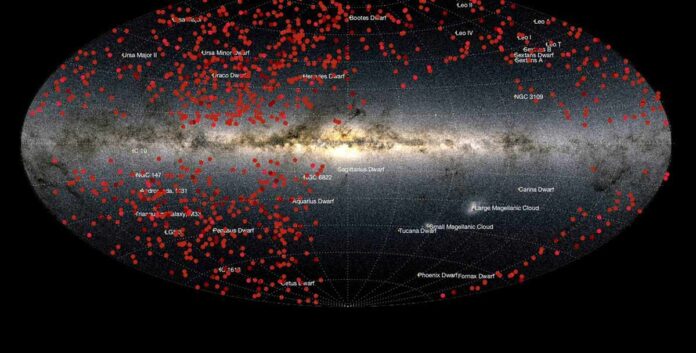The algorithm aids astronomers in sorting through the discoveries made by the Zwicky Transient Facility. California Institute of Technology is the photographer.
Caltech astronomers used a machine learning algorithm to classify 1,000 supernovae entirely on their own. The algorithm was applied to data collected by Caltech’s Palomar Observatory’s Zwicky Transient Facility, or ZTF, a sky survey instrument.
Every night, the ZTF scans the night sky for changes known as transient events. This includes everything from moving asteroids to black holes that have recently devoured stars to supernovae, which are exploding stars. Every night, ZTF sends out hundreds of thousands of alerts to astronomers all over the world to inform them of these transient events. Other telescopes are then used by the astronomers to track and study the changing objects. ZTF data has so far led to the discovery of thousands of supernovae.
However, with massive amounts of data arriving every night, members of the ZTF team are unable to sort through it all on their own.
Using data collected by the ZTF at Caltech’s Palomar Observatory near San Diego, the machine learning algorithm classified 1,000 supernovae entirely autonomously. Lower right, the blank area in the video represents regions of the southern sky that are not visible from Mount Palomar.
To aid in the search, the team instead created machine learning algorithms. They created SNIascore to help them classify potential supernovae. Supernovae are classified into two types: Type I and Type II. Type I supernovae have no hydrogen, whereas Type II supernovae have a lot of hydrogen. A Type I supernova occurs when a massive star steals matter from a nearby star, resulting in a thermonuclear explosion. When a massive star collapses under its own gravity, it produces a Type II supernova.
SNIascore can currently classify Type Ia supernovae, also known as “standard candles” in the sky. These are dying stars that explode in a thermonuclear explosion of constant magnitude. Astronomers can measure the expansion rate of the universe using Type Ia supernovae. In the near future, Fremling and colleagues hope to expand the algorithm’s capabilities to classify other types of supernovae.
Every night, after detecting what appear to be supernovae flashes in the sky, ZTF sends the data to a spectrograph in Palomar, which is housed in a dome just a few hundred metres away and known as a SEDM (Spectral Energy Distribution Machine). SNIascore then collaborates with SEDM to determine which supernovae are most likely to be Type Ia. As a result, the ZTF team is rapidly building a more reliable data set of supernovae that astronomers can use to learn more about the physics of the powerful stellar explosions.

